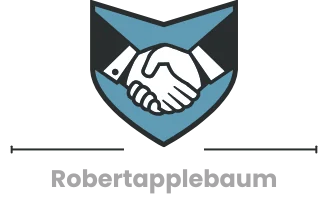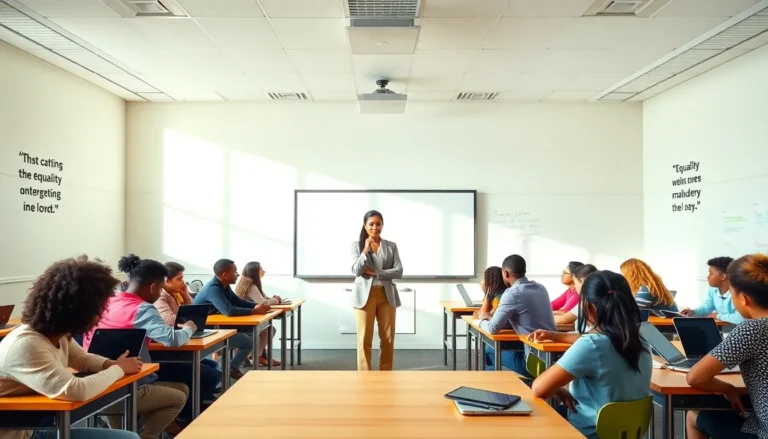Education is supposed to be the great equalizer, but today it feels more like an epic reality show, complete with drama, controversy, and plot twists. From debates about what our kids learn to discussions about who gets to learn, the education system is under siege from all sides. So hold onto your hats and grab your popcorn because in this post, we’re diving into the wild world of controversial issues in education today, because who doesn’t love a good controversy?
Table of Contents
ToggleOverview Of Current Controversies

In the realm of education, controversy isn’t just common: it’s practically a rite of passage. Over the past few years, many have seen more than their fair share of debates that make headlines and stir public opinion. Major issues enveloping schools today include the ongoing discussion about curriculum content and whose voices are represented. Also, the struggle for equitable access to education for all students is highlighting systemic inequalities. Each of these topics garners significant attention and emotion from educators, parents, and policymakers alike, resulting in a cacophony of opinions and arguments.
At the heart of these controversies is a fundamental question: What is the purpose of education? Is it solely to impart knowledge, or is it also about fostering critical thinking and preparing individuals for a complex world? As we explore these issues, it’s crucial to approach them with an open mind, considering all sides of the debate.
Equity And Access To Education
Equity in education has become a hot topic as discussions about access to quality teaching, resources, and support have intensified. For many, the term “equity” signifies a moral imperative, ensuring that every student has the opportunity to thrive, regardless of their background. Unfortunately, disparities remain stark.
For example, students from low-income families often attend schools with limited resources, outdated textbooks, and insufficient facilities. On the flip side, affluent areas boast well-funded schools with advanced technology and extracurricular offerings. As advocates push for change, policymakers face tough questions about how to redistribute resources fairly.
Everyone wants a level playing field: but, achieving that requires not just more funding, but a rethinking of how education is structured. From social programs to community engagement, transforming the educational landscape demands collaboration among schools, governments, and families.
Curriculum Content And Censorship
When it comes to curriculum content, we often find ourselves navigating a minefield of censorship and ideological battles. Debates rage over what should be taught in classrooms, from proposed bans on certain literature to discussions about the inclusion of diverse histories and perspectives. The clash between differing viewpoints can create an atmosphere of uncertainty.
Schools must balance the needs of their students with the expectations of parents and communities. On one side, some support the idea of including progressive themes, like social justice, while others argue for maintaining traditional curricula. What complicates matters further is the myriad of stakeholders involved, each with their own interests.
While teaching students to think critically about history and current events is essential, navigating discussions around sensitive topics can be tough. As educators attempt to instill awareness without instigating conflict, they face challenges in delivering well-rounded education.
Standardized Testing And Accountability
Standardized testing has become a polarizing subject, with many educators, parents, and students expressing frustration. Designed to assess student performance and hold schools accountable, these tests often don’t reflect the complexities of learning and development. Critics argue that an overemphasis on test scores can discourage creativity and critical thinking, while proponents claim that accountability is necessary to maintain educational standards.
More often than not, students feel the brunt of this pressure, stressed out to perform well on assessments that may not genuinely measure their capabilities. This scenario leads many to question whether the current model is serving its intended purpose. Alternatives are being proposed, such as portfolio assessments and project-based learning, which may better capture a student’s growth and understanding.
Mental Health And Student Well-Being
In recent years, mental health awareness has gained significant traction. Yet, it’s surprising how often student well-being gets overshadowed by academic performance in discussions about education. Schools, in many cases, fail to adequately address the psychological challenges students face, leading to a rise in anxiety and stress disorders.
Educators have called for more resources dedicated to mental health support, promoting the idea that a mentally healthy student is more likely to succeed academically. Implementing programs that teach coping mechanisms, encourage open conversations, and provide access to counselors can be vital steps toward improvement. Schools must recognize the importance of mental health in developing a holistic educational experience.
Political Influence And Educational Policy
Education is often at the mercy of political whims. As policies shift with each election cycle, so too does the environment in which schools operate. For teachers and students alike, changes in curriculum requirements, funding, and regulations can feel like a rollercoaster ride of uncertainty.
Discussions about the direction of educational policy can become contentious, with various parties vying for influence. From local boards to state legislators, many are invested in shaping how students are educated. Understanding the political landscape, and its implications for curriculum, funding, and access, becomes key for anyone involved in education.
With constant pressure to conform to shifting political narratives, educators need to stay informed and engaged. A well-rounded approach to educational policy can ensure that the focus remains firmly on the needs of students.
The Role Of Technology In Education
Technology has become inseparable from modern education, yet it brings its own set of controversies. The rise of online learning platforms has transformed the way educational content is delivered, offering students flexibility and access. But, not everyone is on board.
Some argue that reliance on digital tools compromises the quality of education, suggesting that the lack of face-to-face interaction harms student engagement and learning. Others champion technology as a means to democratize learning, breaking down barriers to access.
As schools integrate more technology into their curricula, they face the challenge of ensuring that it complements traditional teaching methods. Balancing innovation with fundamental educational principles becomes an essential task for educators.



